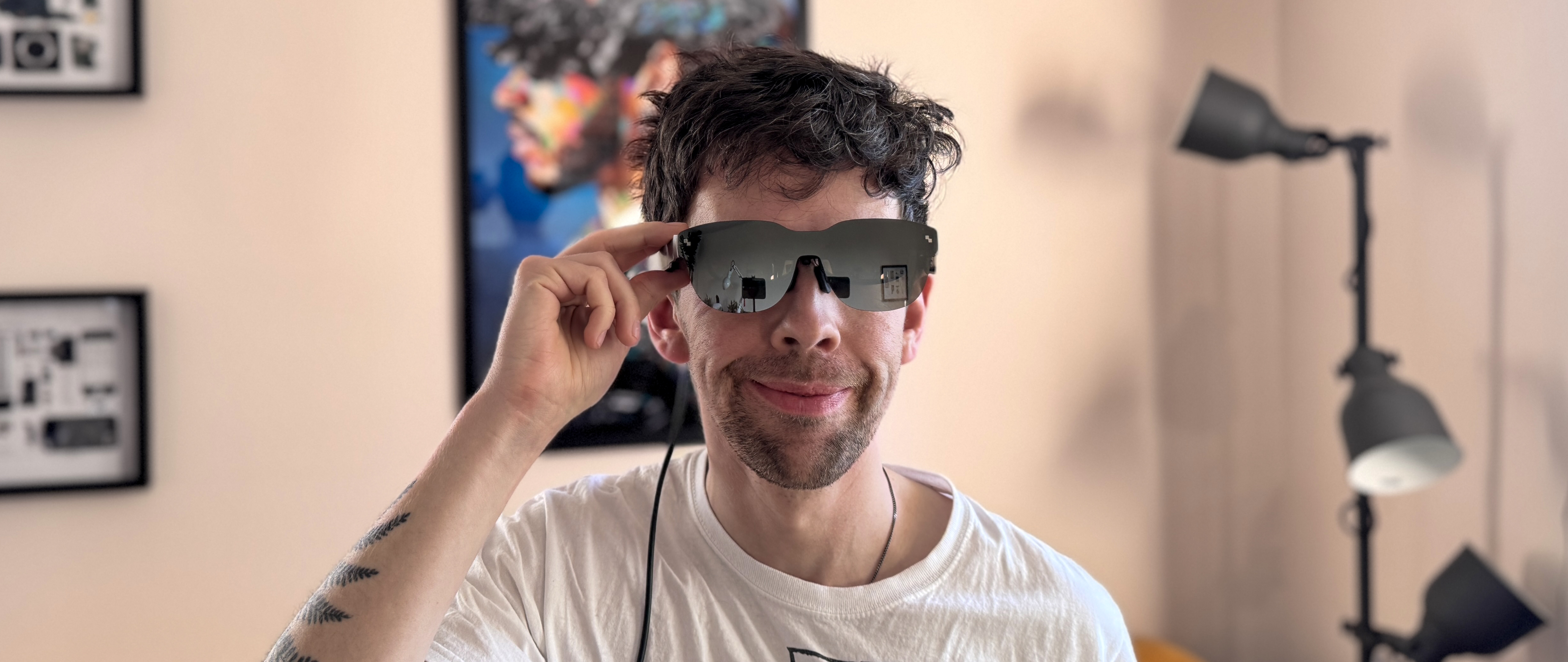Google Pixel Hands-on: Beating Siri at Her Own Game
The Google Pixel and Pixel XL pack powerful cameras inside sleek hardware, but it's Google's Assistant that really stands out.
SAN FRANCISCO — Much of Google's focus at its Pixel launch event was spent on touting the company's hardware chops. But in the case of Google's new smartphones, the real story lies with the software.
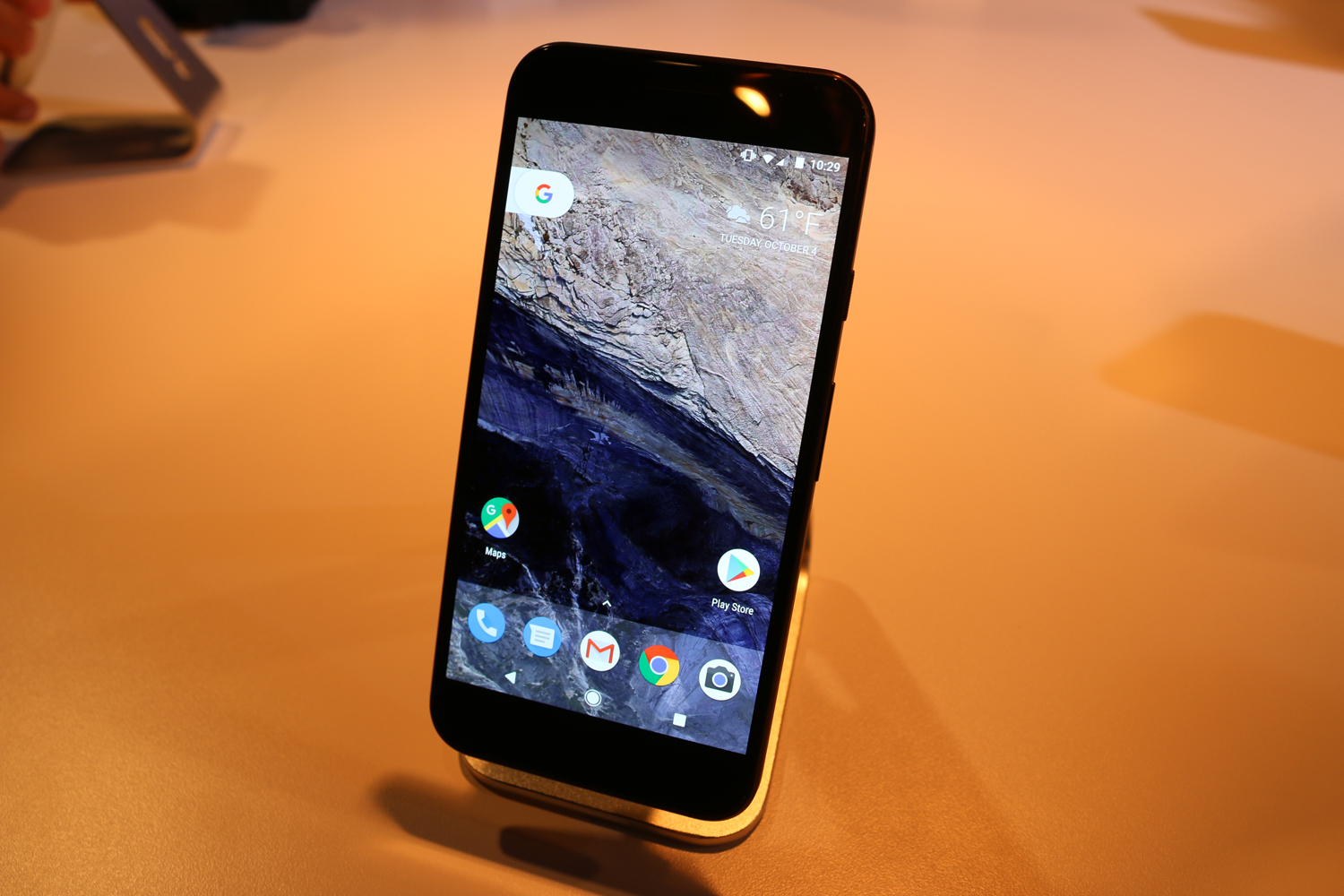
To be sure, both the 5-inch Pixel and 5.5-inch Pixel XL sport some impressive hardware specs, from their Snapdragon 821 processors and 4GB of RAM to the 12.3-megapixel cameras on the rear. But the star of the show lives inside the phone — the Google Assistant that's standing by to answer your every question and carry out your commands.
MORE: Here Are the 10 Best Smartphones Available
I had a chance to see the Pixel and Pixel up close at Google's launch event. And while a lot of the features will remind you of what Apple's done with its latest iPhones, Google has at least built a worthy challenger to the latest smartphones out of Cupertino.
It's All About the Assistant
The Pixel and Pixel XL will be the first phone to have Google Assistant built-in. Assistant is the artificially intelligent agent Google unveiled at its developer conference earlier this year. It's designed to be more conversational and tap into Google's ever-growing knowledge graph. From what I saw in demos of the Assistant, it certainly delivers on those two tasks.
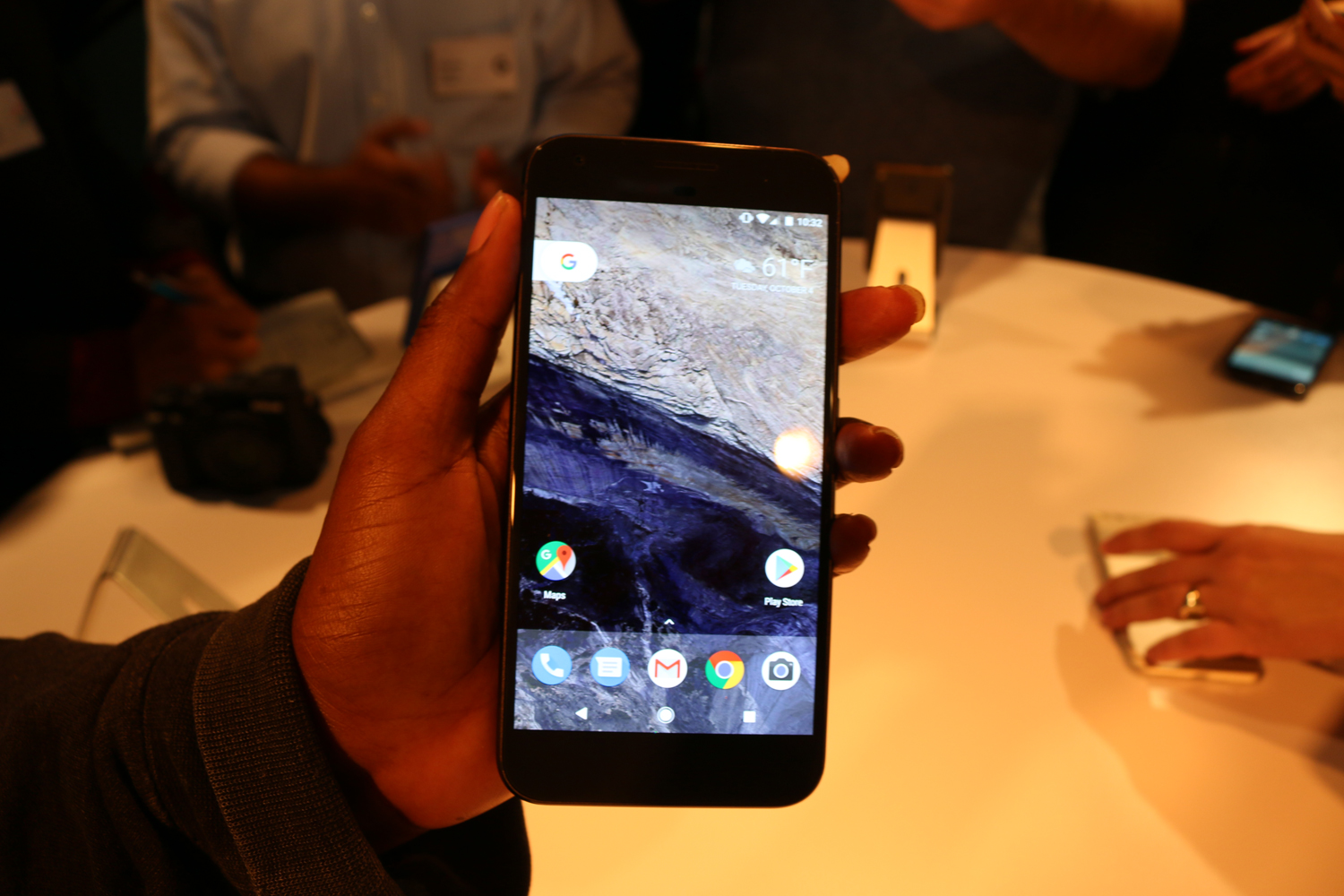
When I asked the Google Assistant when the Giants were playing, it was smart enough to figure that my San Francisco location probably meant I was interested in the local baseball team and not the football team on the other side of the country. Google Assistant dutifully pulled up information about Wednesday night's wild card game.
In a demo during the Pixel phone launch, Brian Rakowski of the Pixel's software project management team used a voice command to pull up the Photos app, asking the Google Assistant to show him photos from last October. When the results included photos shot at the nearby Greek Theater, Rakowski asked the Assistant to tell him about upcoming events, which the Assistant rattled off, using information pulled from Google's knowledge graph. And Rakowski also had the Google Assistant play him a song by The Lumineers; the Assistant did so in YouTube, because that's Radkowsky's app of choice for music playback.
If you've used iOS 10, this isn't exactly ground-breaking stuff. Apple's Siri assistant, for example, can pull up photos from specific times and locations as easily as Google Assistant, and it can also send text messages and make phone calls like Google's voice-powered AI. Where Google hopes to make a difference is with its knowledge graph, which now includes up to 70 billion facts, according to Google's Sundar Pichai. If the Google Assistant puts Google's phones on an equal footing with Siri and the iPhone, Google is counting on its assistant getting smarter and more fully featured over time.
The assistant is easy than ever to access, too. In addition to tapping on the microphone in the search field, you can also just press and hold the home button. An Google Assistant dialog pops right up, ready to field your query.
The Cameras Impress, Too
You can't release a smartphone these days without packing powerful cameras on the front and back, and Google ticks that box with the Pixel. The rear camera is a 12.3-megapixel shooter with a f/2.0 aperture and 1.55-micron-sized pixels. That's not quite as big as the apertures for some of our favorite camera phones like the Galaxy S7 (f/1.7) and iPhone 7 (f/1.8), but the Pixel should be able to hold its own in low-light situations.
That's because the Pixel phones shoot in HDR+ by default, combining multiple short exposure for images with reduced noise and improved picture quality.
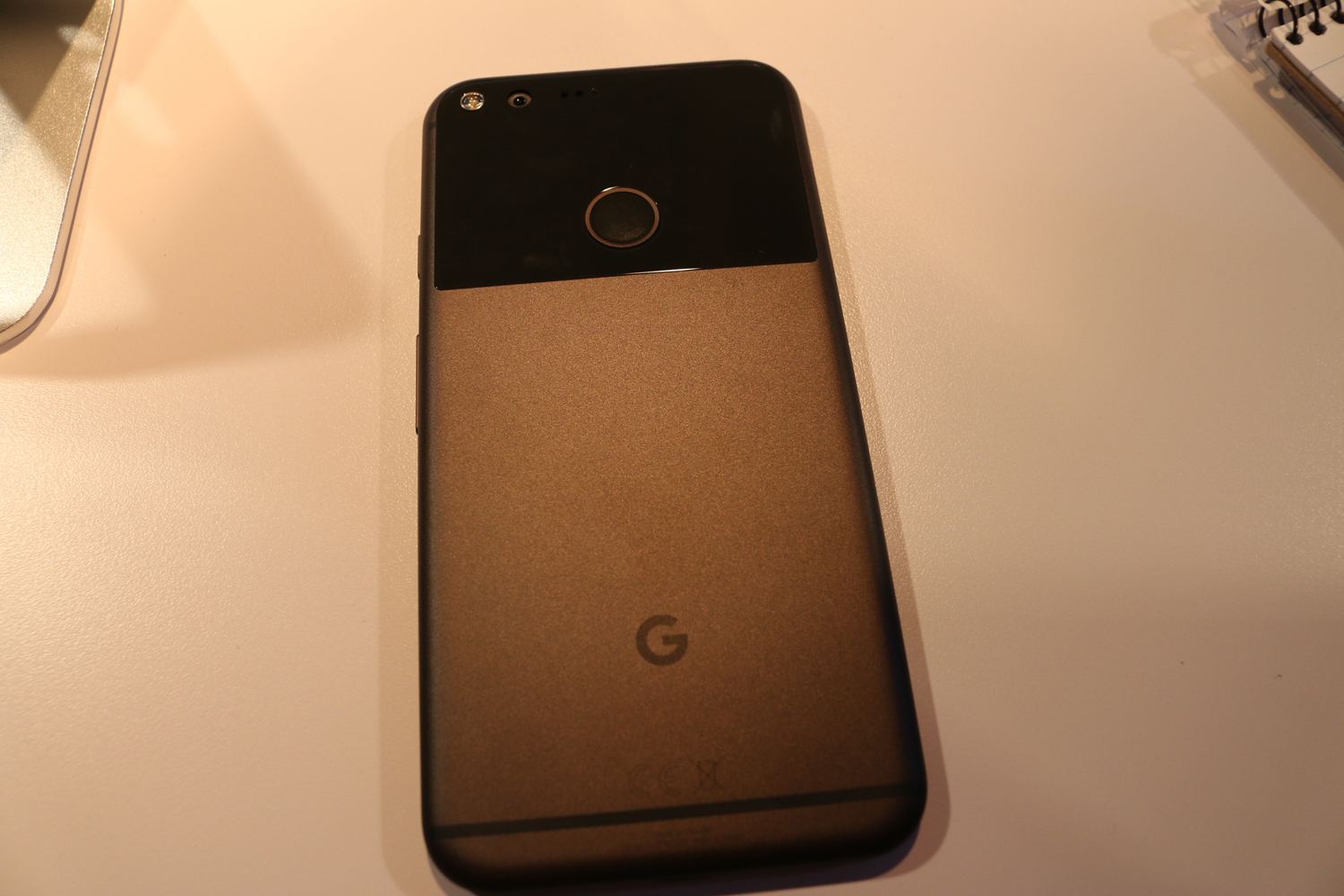
Google also packed a number of features into its camera app, like Smartburst, in which the Pixel's camera takes photos in rapid succession, automatically selecting the best one. A lens blur feature promises the kind of bokeh effect in which a subject stands out against a blurred background that Apple is touting for its iPhone 7 Plus. And built-in image stabilization should make for more stable videos when shot with the Pixel.
MORE: Best Camera Phone - Top-Rated Smartphone Cameras
The Pixel's most impressive photographic feature, though, has nothing to do with either the rear camera of the 8-MP selfie cam up front. Rather, it's the fact that Google is promising free unlimited online storage of photos and videos for Pixel owners. Those images will be stored at full resolution, so you'll never have to worry about running out of space whether you get the 32GB or 128GB version of Google's phone.
A crowded demo hall isn't the best place to test out a smartphone's camera, so we look forward to putting the Pixel's camera through its paces once we get our hands on the phone in a more photogenic
Fast Charging
Besides the screen size and resolution — the Pixel's AMOLED display has a 1920 x 1080 resolution while the XL offers 2560 x 1440 resolution — the big difference between the two models is the battery size. The XL has a 3,450 mAh battery while the Pixel offers 2,770 mAH power pack.
Both phones support fast charging, though. Google says just 15 minutes of charging will give you 7 hours of battery life. And given the strong record of Google's phones in squeezing every last bit of power out of a battery — last year's Nexus 6P and 5X phones are still among the longest-lasting smartphones we've tested — we're hoping to see just how long these new Pixel devices can last on a charge.
Tied to Virtual Reality
Google's Pixel phones boast a not-so-secret weapon that other phones — specifically the iPhone — can't offer. It works with Google's $79 Daydream View virtual reality headset right out of the box. The top-of-the-line Snapdragon 821 processor powering both phones provides a lot of the processing oomph, but the phone's high-resolution screen and high-fidelity sensors also enable the Pixel to support the Daydream platform. The Pixel also ships with Android Nougat, which offers Daydream support.
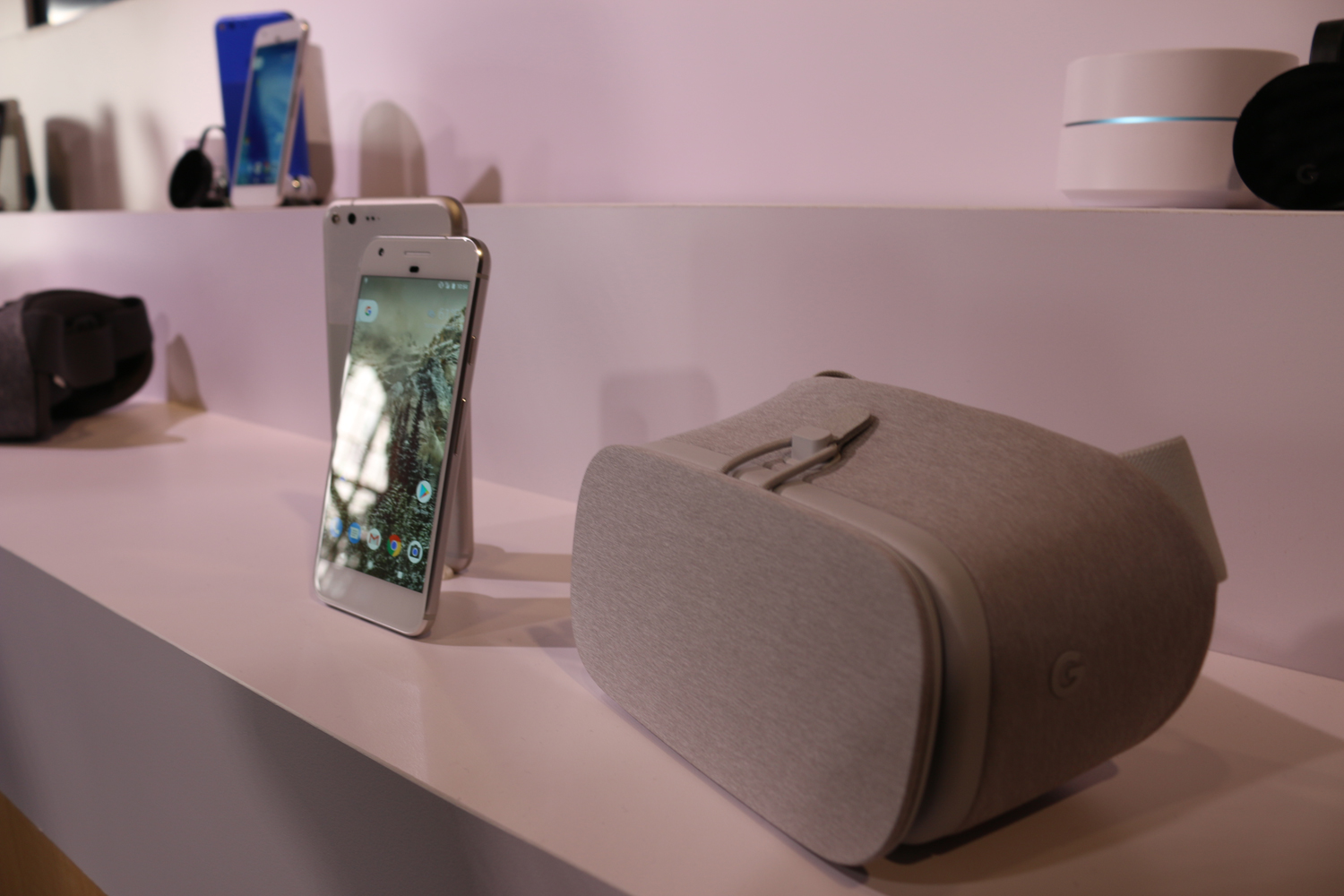
My colleague Sherri L. Smith is putting the Daydream View through its paces, but I had a brief chance to slip on the headset using a Pixel XL, and it's quite an immersive experience. I played a game called Wonderglade, where you rotate the Daydream's handheld control to roll a cow around a barnyard race course. Even with the landscape tilting and my cow picking up a head of steam, I didn't notice any graphical lags, and the controller felt responsive to my twists and turns.
If you want an entry into virtual reality without having to pony up for the Oculus Rift or HTC Vive — and the desktop PCs needed to power them — the Pixel phone and the $79 Daydream View offer a low-cost alternative that promises to give Samsung's $99 Gear VR a run for its money.
First Impressions
With their fetching colors — black, silver and blue — and sleek design, the Pixel phones make a strong first impression. Still, fans of Google phones may balk at the price tag. While the $649 starting price for the Pixel is what you'd pay for an iPhone 7, that's substantially more than what Google charged for a Nexus 6P a year ago.
Still, given the promise of the Google Assistant and the integration with the Daydream headset, the Pixel may be worth the higher price tag. The camera features combined with unlimited cloud storage could appeal to photo fanatics, too, provided the Pixel's camera can deliver in challenging settings like Google claims.
We'll want to spend more time with the Pixel and Pixel XL before we can definitively say where they fit in on the smartphone landscape, but if Google's goal with its Pixel phones is to present its software in the best light, it's off to a good start.
Sign up to get the BEST of Tom's Guide direct to your inbox.
Get instant access to breaking news, the hottest reviews, great deals and helpful tips.
Philip Michaels is a Managing Editor at Tom's Guide. He's been covering personal technology since 1999 and was in the building when Steve Jobs showed off the iPhone for the first time. He's been evaluating smartphones since that first iPhone debuted in 2007, and he's been following phone carriers and smartphone plans since 2015. He has strong opinions about Apple, the Oakland Athletics, old movies and proper butchery techniques. Follow him at @PhilipMichaels.

